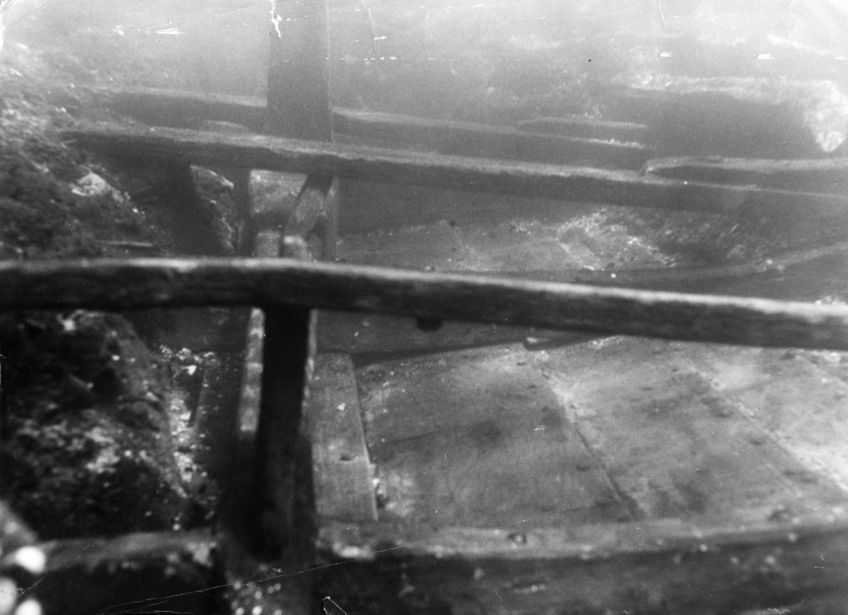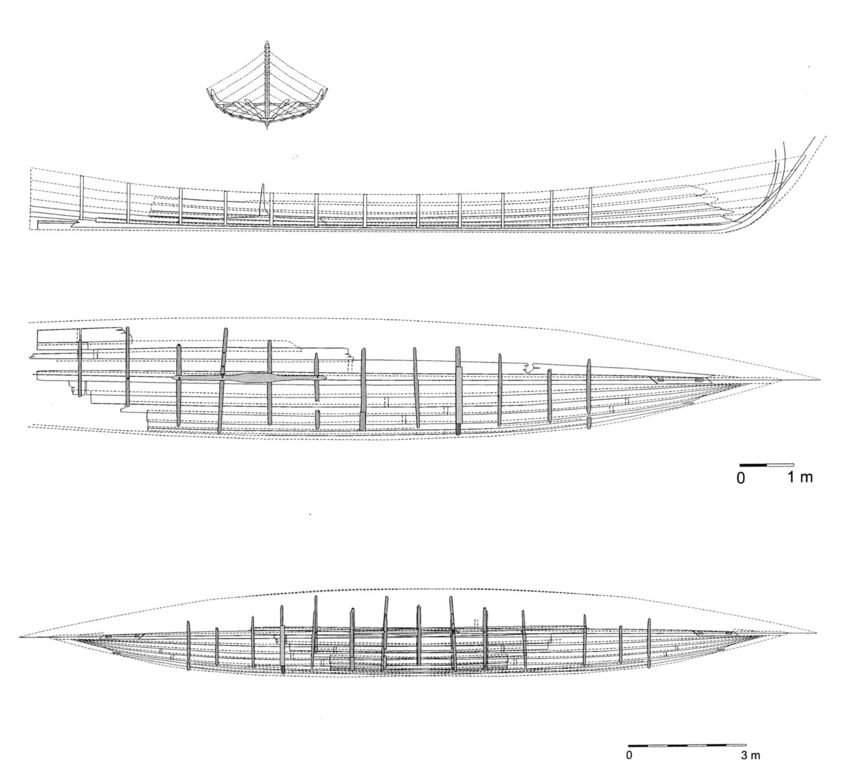Puck 2 - a Slavic longship
The medieval settlement of Puck lies at the western end of the Bay of Gdansk in Poland. Here, in 1977, scuba divers found the remains of an old harbour and a shipwreck lying on the seabed off the coast. Extensive archaeological and geological investigations in subsequent years demonstrated that a rise in sea level of 70 cm since Viking times had submerged the settlement's harbour and buried it under a layer of sediment together with the remains of several vessels, including the one referred to as Puck 2.
Puck 2 is the wreck of a longship. Large parts of the midship and the starboard side of the bow are preserved. Important parts, such as the lower part of the stempost and the keelson were found in a good state of preservation. The original length of the ship was 19-20 m, its width around 2.2 m. Dendrochronological analyses have revealed that the vessel was built in the first half of the 10th century. As a consequence, it is of the same age as the longships from the ship burials at Ladby and Haithabu, but is much better preserved.
In contrast to the Scandinavian finds of ships from the Viking Age, Puck 2 was largely assembled using small treenails and not iron rivets. On the stretches of coast where the population in Viking times and the early Middle Ages was predominantly Western Slavic, the use of treenails and moss as caulking was predominant in a form of ship-building which otherwise was very similar to that employed in Scandinavia. Another feature which appears to distinguish Scandinavian from Western Slavic ship-building is the way in which the heel of the mast is secured. In the Slavic vessels, the step of the mast is often made in association with a mast rib, whereas in the Scandinavian examples it is usually found in a keelson. Puck 2 is remarkable in this respect as it has a keelson, which resembles closely corresponding Scandinavian keelsons.
Puck 2 was built at a point in time when contacts between Scandinavians and the Slavic population south of the Baltic were close. On the southern coast of the Baltic there were great trading places, which Scandinavians eagerly visited, and princes on both sides of the Baltic gave away their daughters to each other. But mutual attacks and attempts at conquest were also part of everyday life and Puck 2 is the clearest expression so far of the maritime power possessed by the Western Slavic princes. The ship itself, however, "died a peaceful death". When it was no longer serviceable, it was hauled partly up on to the beach and secured with stakes driven through the ship’s planks and down into the seabed. The lower, water-filled part of the vessel was used for the retting of flax – an important process in the production of linen – while a small open hearth was established in the upper, dry end, where the sides of the ship gave shelter from the wind in the open flat landscape.
Danish text: Jan Bill
Translation: Gillian Fellows-Jensen
Read more:
The Puck Bay wrecks - an opportunity for a "Polish Skuldelev" byJ. Litwin, in Shipshape. Essays for Ole Crumlin-Pedersen on the occasion of his 60th anniversary February 24th 1995, edited by O. Olsen, J. Skamby Madsen & F. Rieck., s. 135-150. The Viking Ship Museum, Roskilde, 1995
Changes to the coastline in the neighbourhood of the medieval harbour in Puck, in the light of the research made by the Polish Maritime Museum in Gdansk by I. Pomian, in Proceedings of the Conference "Rapid Transgressions into semi-enclosed basins", Polish Geological Institute Special Papers 11, 31-36. Gdansk 2004
Archaeological excavations in Puck Harbour, Gdansk District, Poland by W. Stepien in International Journal of Nautical Archaeology 13, 1984, s. 311-321
Archaeological findings of longships
Learn more about the longships we know today. Some were found in burial mounds, others in the Viking's harbours and others were recycled by the Vikings as part of defense systems of their main towns.
Below you can find links to read more about the longships.
» Ladby - the ship in the grave
» The longship from Haithabu Harbour

